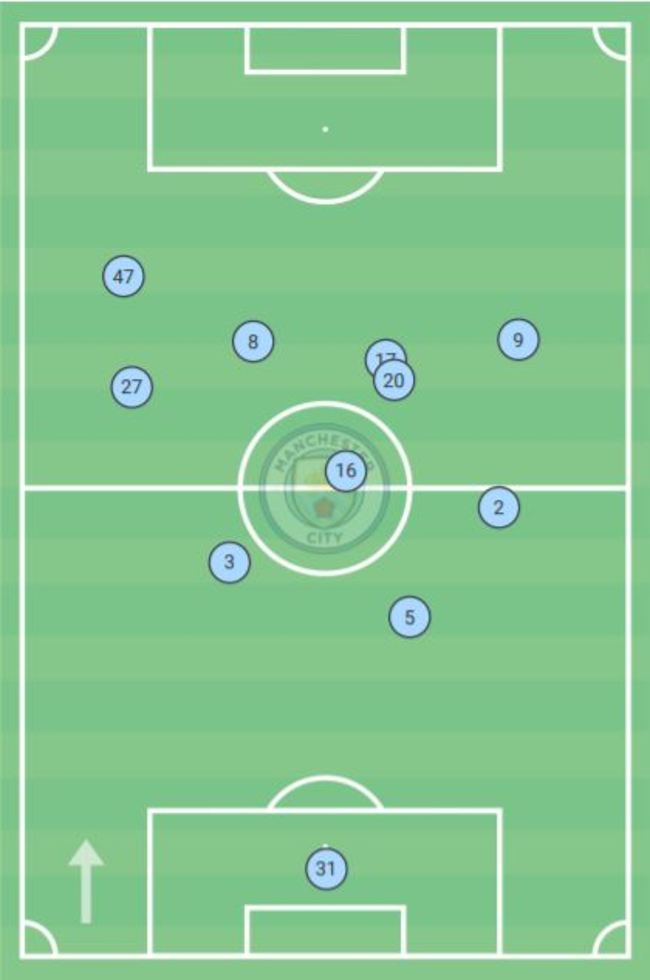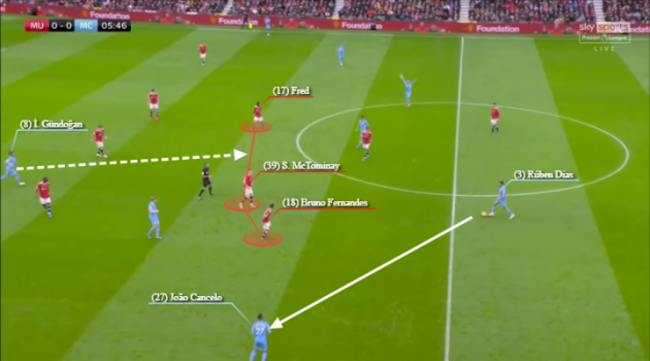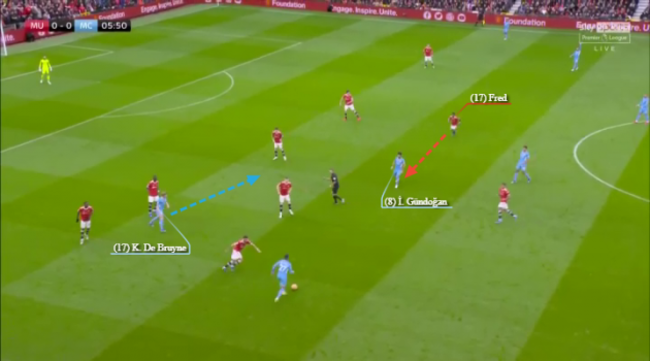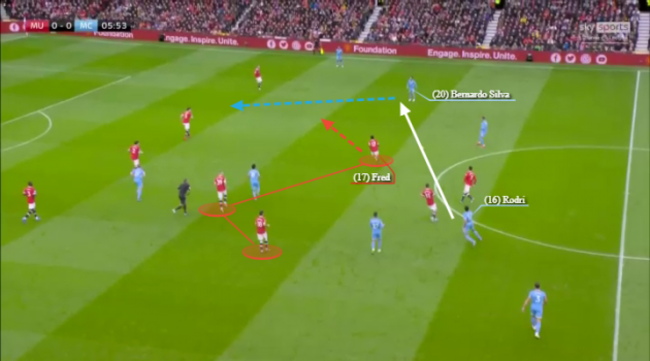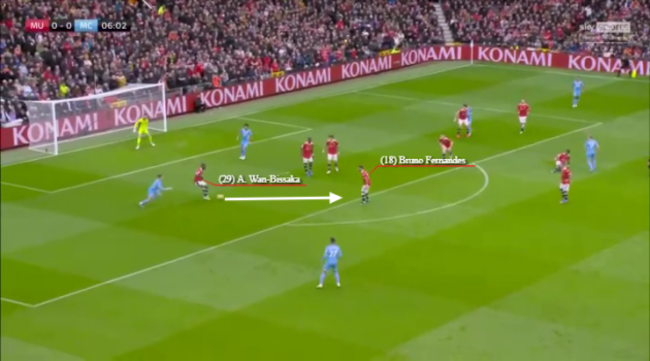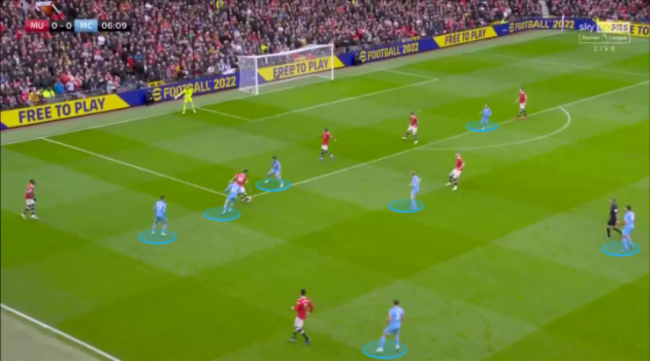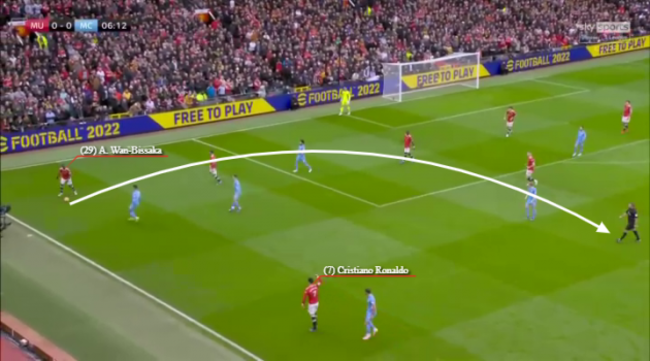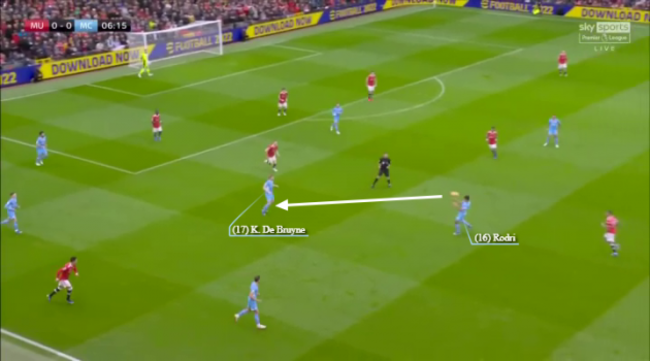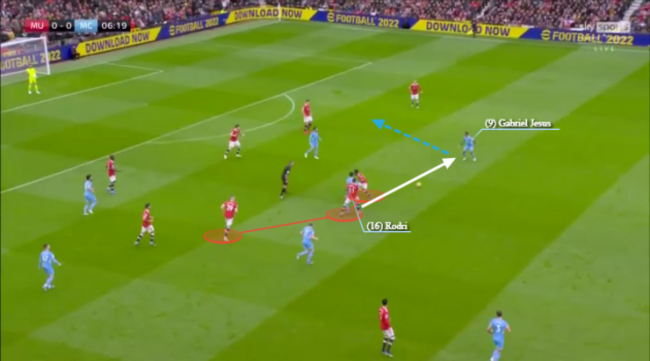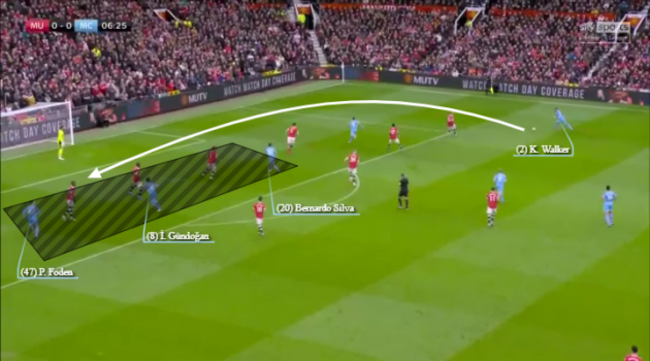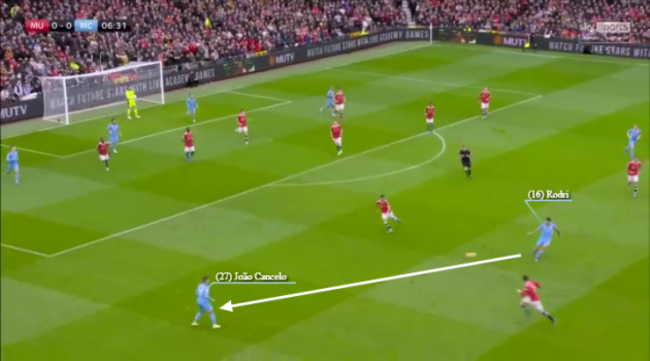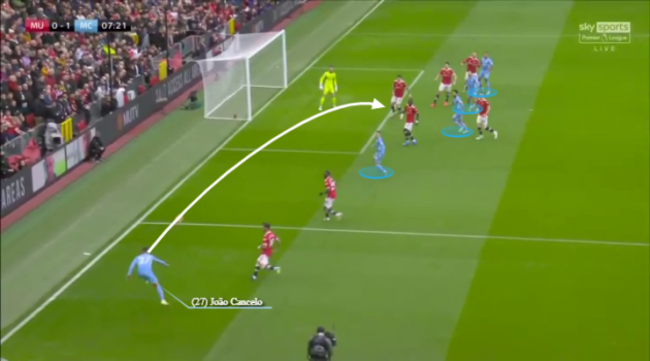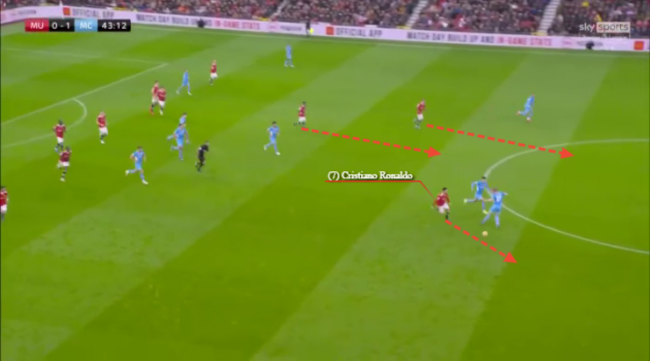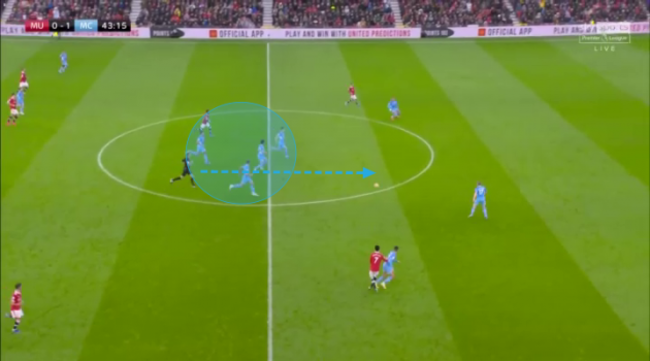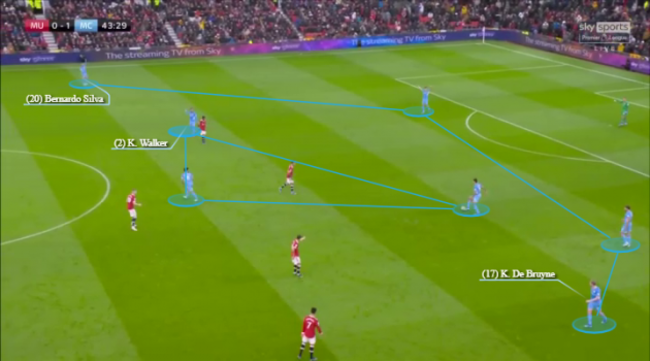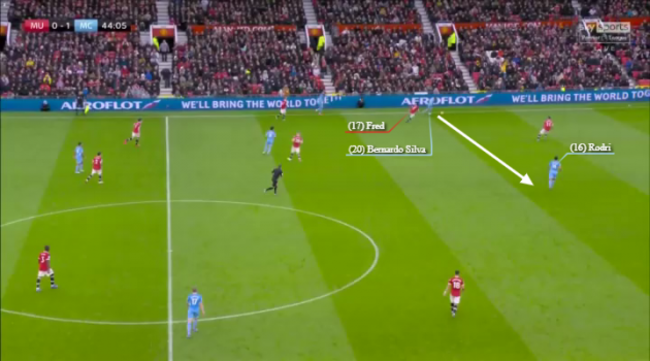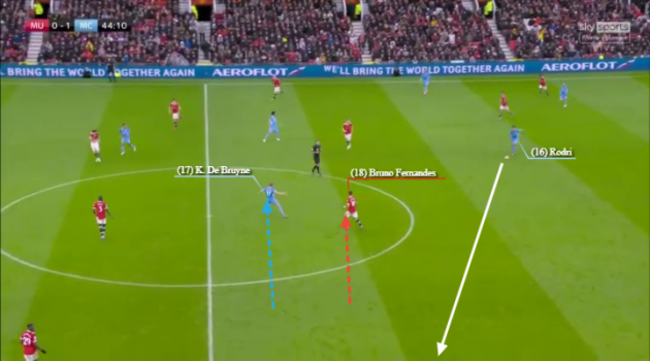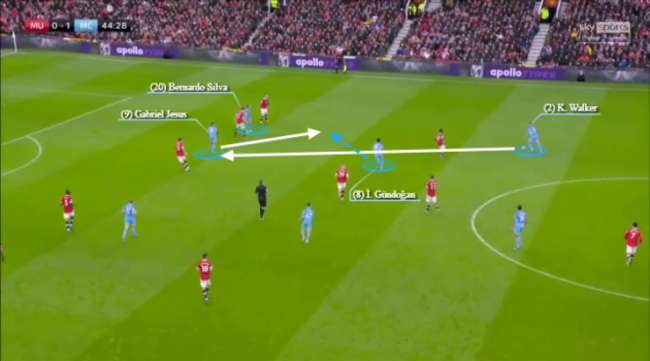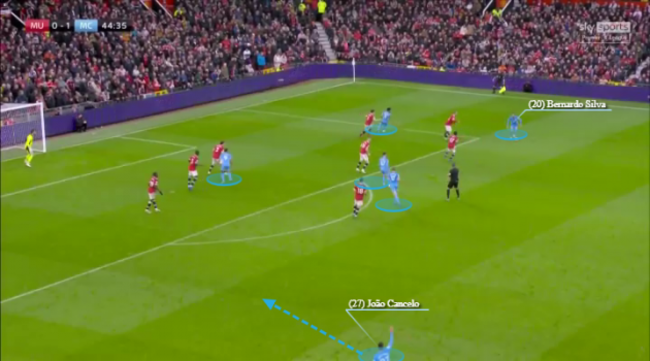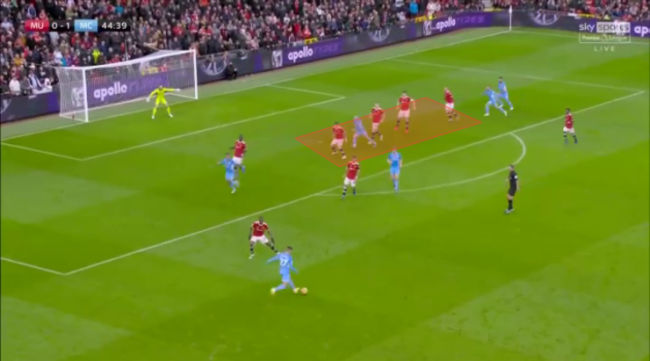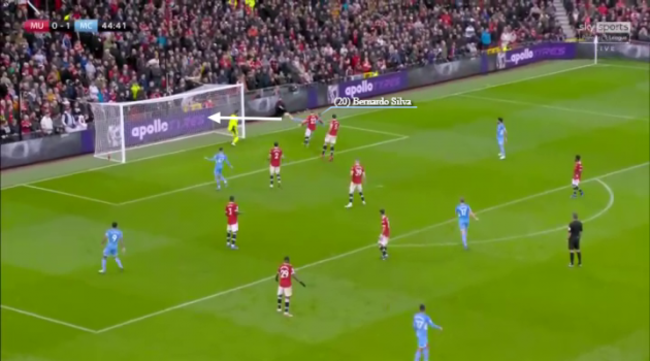FOLLOWING A ONE-sided Manchester derby that had the blue side of the city smiling, Shane Keegan analyses the brilliance of Man City’s performance.
Ole aboard the Guardiola carousel
Pep Guardiola has never been a man to be tied down by set positions or formations. But this season, the departure of Sergio Aguero and the redeployment of Gabriel Jesus to the right wing seems to have taken his Manchester City side’s tactical flexibility to a whole new level.
On Saturday afternoon, Ole Gunnar Solskjaer’s hapless Manchester United stepped onto the Guardiola carousel and by the time they got back off it they were dizzy, dazed and confused.
Their two-nil defeat may not quite set off the same alarm bells as their recent hammering by Liverpool but make no mistake about it, this was about as comprehensive a victory as is imaginable.
4-3-3…. 4-4-2…. 3-1-6…. Take your pick
When the teams were announced an hour before kick-off, the initial Sky Sports graphic of the Man City starting line-up had them in a 4-3-3 formation with Phil Foden at centre forward.
A couple of minutes before the game got underway a new graphic appeared, this time with Kevin De Bruyne in the central role.
After the final whistle, Guardiola told us that it was in fact Bernardo Silva who was playing in the false nine role.
To be fair to Sky, the confusion is understandable and was just another example of the almost positionless system that his team are trying to perfect.
For Guardiola it’s simple. There are spaces on the field that need to be filled at various stages of the game. He doesn’t care who fills them, so long as they are occupied.
When this approach works, as it did on Saturday, it is almost impossible for the opposition to negate.
And for analysts, trying to put a traditional numerical formation on their shape, is equally challenging.
To show just what I mean, take a look at the positional map below based on the average of the touches that each player had.
Now tell me, what formation is that?
Having watched the game back, I think the best stab I can make at it is to call it a 3-1-6, with Kyle Walker (2), John Stones (5) and Ruben Dias (3) as the ‘3’, Rodri (16) as the ‘1’ and the other 6 as the ‘attackers’.
To emphasis the point, these six players were City’s best for touches inside the oppositions box, each on the ball four or more times.
No United player touched the ball inside the City box more than once!
There were four things that City did incredibly well in this game:
1) Interchanging of positions
2) Overloading small areas of the field
3) Switching the point of attack
4) Instant pressing when they lose the ball
While examples of each of the above were plentiful, they were never more obvious than in the build up to both games.
Attack, press, attack, score
To fully understand just how City go about creating their chances, the route of their first goal needs to be traced back to their previous attack. Below we see an image from City’s initial attack.
As Dias steps forward with the ball, the key movement is that of Ilkay Gundogan. Having first run in behind for a pass that never came, he now retreats back out and positions himself between Scott McTominay and Fred as Dias passes to Joao Cancelo.
This has the knock-on effect of dragging Fred across to the left far further than he would have wished. It’s also worth noting the current position of De Bruyne, whose continuous lateral movements throughout the game were superb.
Rodri switches the ball across to the right-hand side where Bernardo Silva now has lots of room to accelerate into, now that Fred is out of position.
As he pops it off the Gabriel Jesus, have a look at the position De Bruyne has now taken up allowing him to receive the ball and shoot.
United do well to get a block on his attempt and when the ball deflects into the path of Aaron Wan-Bissaka it appears as though the danger has passed.
His pass to Bruno Fernandes is a little bobbly though and City take that as a trigger to descend on that area of the field.
Within a couple of seconds, there are seven blue players inside less than 20% of the pitch, hassling the man on the ball and cutting off his options.
They back United into a corner, and we can see Cristiano Ronaldo gesturing to Wan-Bissaka to just lump the ball forward out of danger.
The England full-back doesn’t get enough on his clearance though and Rodri intercepts to cushion a ball down to De Bruyne and City are on the attack again.
Immediately, they repeat the pattern of the previous attack by again sucking Fred across and exploiting the space that he has vacated, this time with Jesus.
As he rolls it out to Walker we can see that City, despite being strikerless, have created a 3 v 3 just outside the six-yard box and are extremely unfortunate not to turn his sumptuous delivery into the back of the net.
Victor Lindelof manages to clear it but only as far Rodri, who is anxious to keep the pressure on and swiftly plays the ball left to Cancelo.
Fernandes, being the closest player to his fellow Portuguese international, initially makes a dart towards him before inexplicably deciding to slow down as much as to say, “Your right footed so I’m going to allow you to try and cross it off your left”.
Cancelo, to Fernandes’ shock, shows that he is a tad more comfortable on his weaker foot than your average Sunday league junior football player and willingly accepts the invite to whip a ball in to an area where City attackers await, only to see United defender Eric Bailly be the player to turn the ball into the net.
City’s fluidity helps them put the game to bed before half-time
City’s second goal may have finished with some atrocious United defending but again it’s worthwhile going all the way back to the start to analyse some of the brilliance that came before.
From a City corner United broke away and Ronaldo, with Fred and Mason Greenwood in support, looked to capitalise on a mix-up between Cancelo and De Bruyne.
But the pace with which the City players retreated resulted in not one but four of them getting back into a position to intercept Ronaldo’s attempted pass.
What followed was a 26-pass move that ended up with the ball in the United net again.
As City look to play out, they set up with what looks like an orthodox back four and midfield three. On closer examination though, the players in those positions are anything but orthodox.
De Bruyne and Silva, who, if you’ve forgotten, have been taking turns in the false nine role, amazingly now appear to be City’s full-backs.
As the play develops Silva, still at right-back, looks as though he is under pressure from Fred but manages to wriggle free of him and play infield to Rodri before finally heading up the pitch.
As Rodri strides forward, De Bruyne makes another one of those selfless lateral movements that moves an opposition player and frees up space for a team-mate. He even goes as far as to point Rodri in the direction of the room he has created for Cancelo.
The attack builds down the left, but it is only when it switches back across to the right again that it picks up pace.
City, as ever, have managed to create an overload in a small area of the field and Jesus sets back to Gundogan who drives at the United defence.
When he offloads to Silva, we are left with the familiar picture of City’s attacking six players; five of them dragging United to one side of the field while the other, Cancelo on this occasion, gets ready to accelerate into the room created on the other side.
There is no doubt that United should have dealt quite comfortable with the resulting in-swinging delivery given the number of bodies they had in good defensive positions.
But they didn’t and that allowed false nine, turned right-back, turned false nine, Silva to prod home at the back post.
Given the totally dominant first-half display that City had given, it would be a stretch for United to claim that they were hard done by.
Conclusion
City’s performance in the second half of this game was reminiscent of the those that we used to see from the all-conquering Spanish international side between 2008 and 2012.
They starved Manchester United of the ball, maintaining their 69% possession stat from the first half, and chose to only attack the box sporadically.
The decision to defend by passively keeping the ball may have spared United’s blushes but crucially it also gave them little to no opportunity to launch any counter attacks, their only real viable way of getting back in the game.
That they exerted so little energy to be able to keep the same 11 players on the field right through to the final whistle probably tells you all you need to know about just how comfortable a victory this was.

